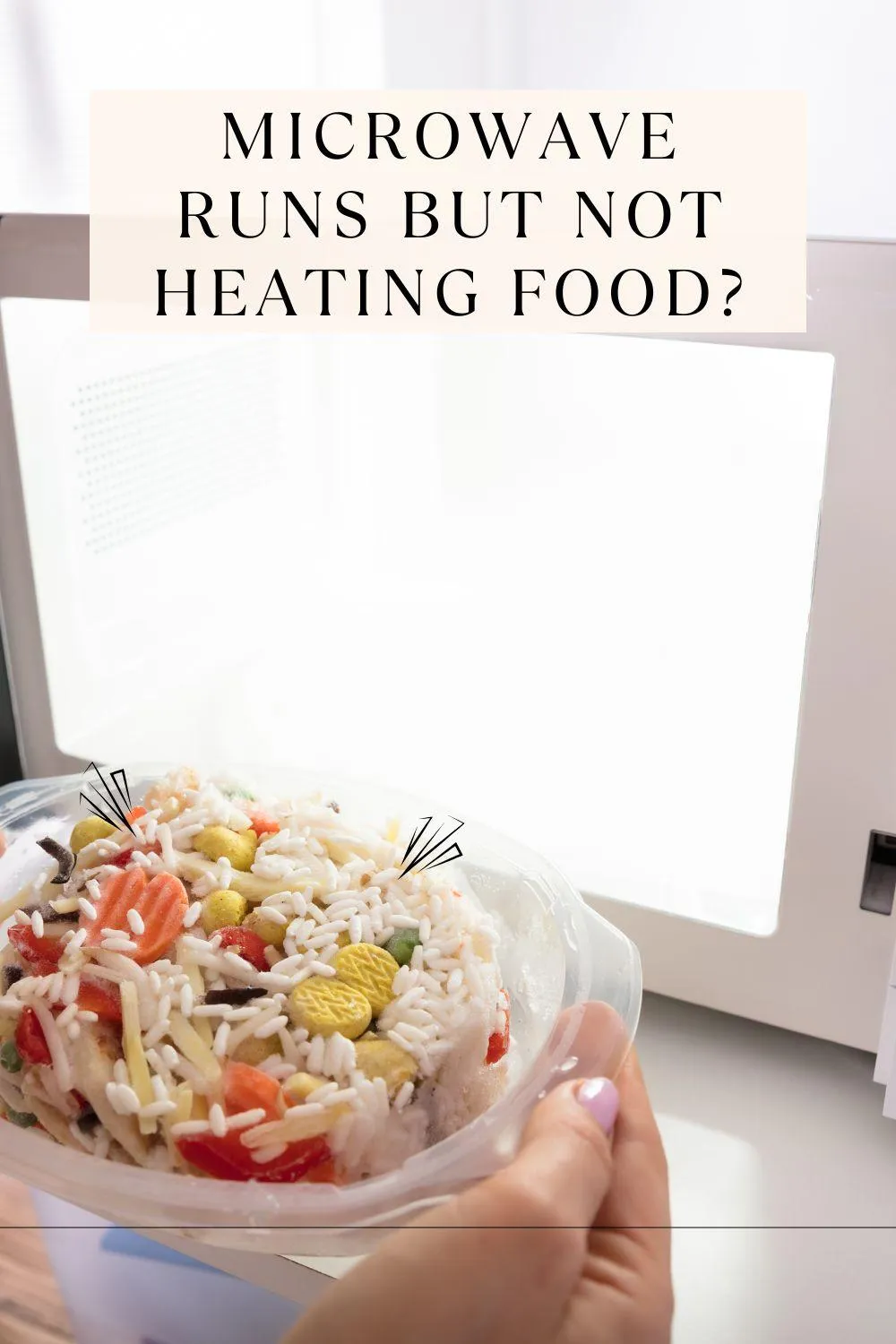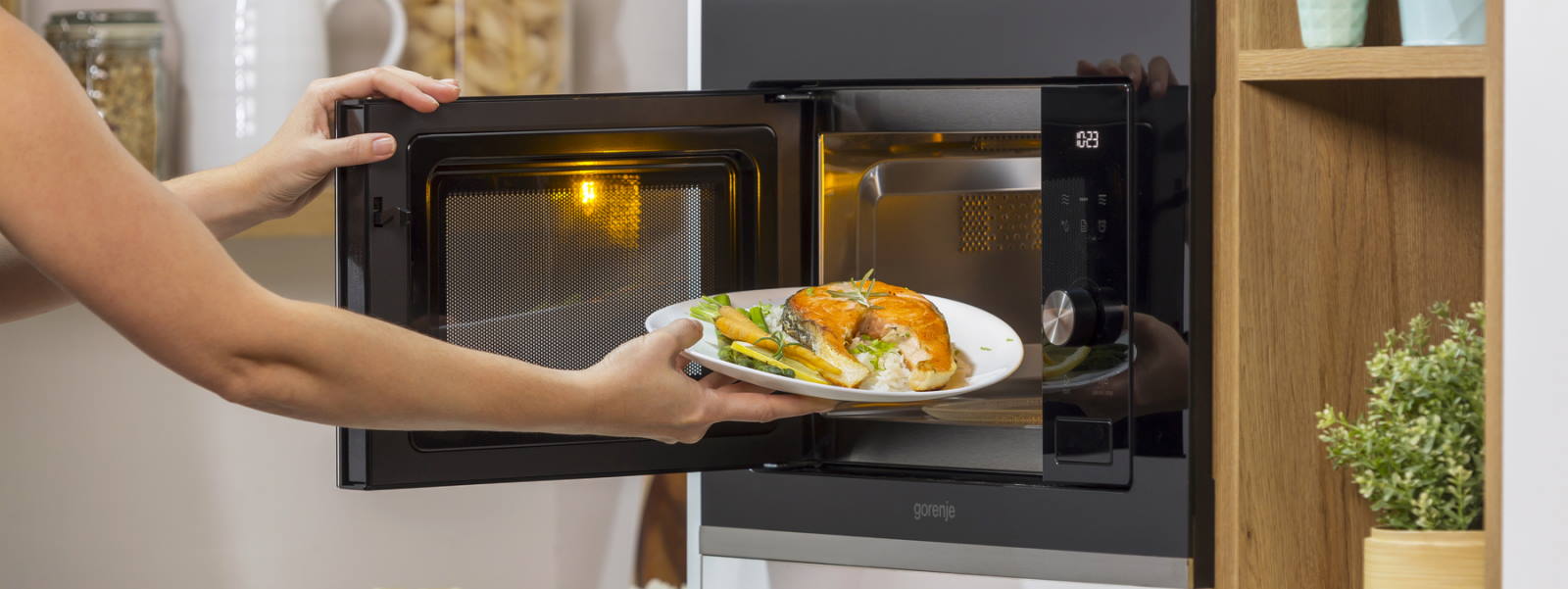THE FASTEST TOOLS IN TOWN
ZIP APPLIANCE REPAIR & SERVICE
Phone: (559) 272-4265
Phone: (559) 272-4265
Appliance Repair Tips For Fresno, CA Residents

Is Your Microwave Not Heating Food? Here’s Why
If your microwave is running but not heating food, don’t let mealtime frustrations simmer. Discover the common causes and solutions to get it back on track! - Appliance Boss
Introduction
Understanding the frustration of a microwave that won’t heat
Picture this: You place your dinner in the microwave, set the timer, and eagerly await a hot meal. Instead, you hear the familiar whirr, but the food remains cold. This experience can be exasperating, leaving you puzzled about what could be wrong. Microwaves, while incredibly convenient, are complex appliances that can malfunction for various reasons. Understanding these issues is essential to get your microwave back to its efficient heating prowess.
Common Reasons Your Microwave Isn't Heating
Exploring the typical culprits behind the issue
Microwave heating problems can stem from several sources, each requiring a unique approach to diagnosis and repair. The most frequent offenders include a malfunctioning magnetron, issues with the capacitor, a faulty high voltage diode, or even problems with the door switch. Understanding these components is crucial, as each plays a vital role in the heating process. Let's delve deeper into these specific issues that might be causing your microwave to underperform.

The Role of the Magnetron
What is the magnetron and how does it work?
At the heart of your microwave’s heating capability lies the magnetron, a specialized vacuum tube that generates microwave radiation. This radiation is what heats your food, agitating water molecules to produce heat. The magnetron converts electrical energy into microwave energy, enabling the appliance to cook food quickly and evenly. If this component is compromised, your microwave may run but fail to heat, leaving your meals cold and unappetizing.
When the Magnetron Fails
Signs your magnetron may be malfunctioning
Several signs indicate a failing magnetron. If your microwave runs but does not heat food, emits a strange humming or buzzing noise, or if there’s visible damage such as burn marks, these are red flags. You may also notice that food is unevenly heated or cold in spots. A malfunctioning magnetron often requires professional replacement, as handling high-voltage components can be hazardous.
Capacitor Issues: What You Need to Know
Understanding the function of the capacitor in your microwave
The capacitor stores electrical energy and releases it to the magnetron when needed. It plays a critical role in providing the magnetron with the high voltage necessary for producing microwave energy. If the capacitor is faulty, the microwave may not operate correctly, leading to heating issues. Understanding this component’s importance helps you identify potential problems early.
Recognizing a Faulty Capacitor
How to identify if your capacitor is the problem
Identifying a faulty capacitor can be tricky, but there are clear indicators. If you notice a burnt smell, swelling, or leakage from the capacitor, these are signs of failure. Additionally, if the microwave struggles to start or frequently trips circuit breakers, the capacitor could be the culprit. Caution is vital here; capacitors can hold a charge even when the microwave is unplugged, posing a risk of electric shock.
The Importance of the High Voltage Diode
What does the high voltage diode do in the heating process?
The high voltage diode serves a critical role by allowing current to flow in only one direction, effectively converting AC power to DC power for the magnetron. This conversion is essential for producing the microwaves that heat your food. A faulty diode can disrupt this process, leading to inadequate heating or no heating at all. Understanding its function can help you narrow down the issue.
Symptoms of a Bad Diode
Common indicators that your diode may need replacement
Several symptoms can indicate a defective high voltage diode. If the microwave runs but does not heat, or if it exhibits a burning smell, these are strong signals of a diode issue. Additionally, if you hear unusual noises during operation, it may be time to check the diode. Testing a diode requires specific tools and expertise, so if you suspect this is the issue, seeking professional help is advisable.
Door Switch Malfunctions
How a faulty door switch can prevent heating
The door switch is a safety feature that prevents the microwave from operating while the door is open. If this switch malfunctions, the microwave may not heat even though it appears to be functioning. A broken door switch can lead to unreliable operation, where the appliance runs without actually cooking the food. Recognizing the importance of the door switch is essential for effective troubleshooting.
Diagnosing Door Switch Problems
Easy steps to test if your door switch is working
To diagnose door switch problems, begin by checking if the microwave stops when you open the door. If it continues to run, the switch may be faulty. Additionally, you can use a multimeter to test for continuity in the switch. If there is no continuity when the door is closed, replacing the door switch is necessary to restore proper functionality.
Control Board Failures
How the control board impacts microwave function
The control board is the brain of your microwave, managing the appliance's settings and functions. If the control board fails, it can lead to erratic behavior, such as not heating properly or inconsistent timing. Understanding the role of the control board can help you determine if it's the source of the heating issues you're experiencing.
Signs of a Defective Control Board
What to look for when your control board is failing
Common signs of a failing control board include unresponsive buttons, error codes on the display, or the microwave turning on and off unpredictably. If you notice any of these issues, it may be time to investigate the control board further. Repairing or replacing a control board typically requires professional assistance due to the complexity involved.
Issues with the Turntable
How a malfunctioning turntable affects heating
The turntable in your microwave ensures even heating by rotating food as it cooks. If the turntable isn't functioning properly, your food may be cooked unevenly, leaving some parts hot and others cold. This malfunction can occur due to a broken motor or a misaligned track. Addressing turntable issues is essential for achieving consistent cooking results.
Testing Turntable Functionality
Tips to determine if the turntable is the source of the problem
To test the turntable's functionality, first check if it rotates when the microwave is running. If it doesn’t, inspect the motor and track for damage or obstructions. Additionally, try moving the turntable manually to see if it moves freely. If you find any issues, they may need repair or replacement to restore full functionality.
Overheating and Thermal Fuses
Understanding how overheating can trigger safety mechanisms
Thermal fuses are safety devices that cut off power to the microwave if it overheats, preventing potential fire hazards. If your microwave is not heating, a blown thermal fuse might be the cause. Recognizing the importance of this safety feature is crucial for troubleshooting heating problems effectively.
Identifying Thermal Fuse Issues
Signs that your thermal fuse might be blown
Common signs of a blown thermal fuse include a microwave that won't turn on or function at all. If the microwave was previously overheating or if there are visible signs of damage, such as burn marks, these may indicate a thermal fuse failure. Testing the fuse with a multimeter can confirm whether it's operational.
Poor Power Supply
How inconsistent power supply can affect heating performance
An unreliable power supply can significantly impact your microwave’s ability to heat food. If the voltage is too low or fluctuates, it can prevent the microwave from reaching the necessary temperature. Understanding how your power supply works is essential for diagnosing this type of issue.
Testing Power Supply to Your Microwave
Simple methods to check your microwave's power source
To test the power supply, begin by checking if other appliances on the same circuit are functioning correctly. If they aren’t, the issue may lie with the circuit itself. Additionally, using a multimeter to measure the voltage at the outlet can help determine if it’s providing adequate power to the microwave.
Maintenance Tips for Microwave Longevity
Best practices to keep your microwave heating efficiently
Regular maintenance is vital to ensure your microwave operates efficiently. Clean the interior and exterior, check for food debris that may cause odors, and inspect the door seals for damage. Keeping the microwave well-maintained can prevent many heating issues and extend its lifespan.
Troubleshooting Steps to Take
A step-by-step guide for diagnosing the problem
Start by checking the basics: ensure the microwave is plugged in, the outlet works, and the door is fully closed. Next, assess the turntable and test the door switch. If those components check out, move on to examining the magnetron, capacitor, and diode. Document your findings as you go to help pinpoint the issue more effectively.
When to Call a Professional
Knowing when it's time to seek expert help
If you encounter issues beyond your expertise, such as dealing with high-voltage components like the magnetron or capacitor, it’s best to call a professional. Microwaves contain potentially hazardous elements, and a qualified technician can diagnose and repair the appliance safely. Don't hesitate to seek help when needed to avoid further complications.
Recap of Common Microwave Heating Issues
Summarizing the main reasons for heating problems
Microwave heating issues can arise from various components, including the magnetron, capacitor, high voltage diode, door switch, control board, and turntable. Regular maintenance and prompt troubleshooting are essential to addressing these problems effectively. Being aware of these potential issues can help you resolve heating concerns swiftly.
Conclusion
Final thoughts on keeping your microwave in top working condition
Maintaining a well-functioning microwave is essential for convenient meal preparation. By understanding the components involved in heating and recognizing the signs of potential issues, you can address problems before they escalate. Regular maintenance, combined with prompt troubleshooting, will ensure your microwave continues to serve you well. For professional assistance with appliance repairs, consider reaching out to Zip Appliance Repair and Service at fresno.ziprepairservice.com or call (559) 272-4265 for expert help.

Is Your Microwave Not Heating Food? Here’s Why
If your microwave is running but not heating food, don’t let mealtime frustrations simmer. Discover the common causes and solutions to get it back on track! - Appliance Boss
Introduction
Understanding the frustration of a microwave that won’t heat
Picture this: You place your dinner in the microwave, set the timer, and eagerly await a hot meal. Instead, you hear the familiar whirr, but the food remains cold. This experience can be exasperating, leaving you puzzled about what could be wrong. Microwaves, while incredibly convenient, are complex appliances that can malfunction for various reasons. Understanding these issues is essential to get your microwave back to its efficient heating prowess.
Common Reasons Your Microwave Isn't Heating
Exploring the typical culprits behind the issue
Microwave heating problems can stem from several sources, each requiring a unique approach to diagnosis and repair. The most frequent offenders include a malfunctioning magnetron, issues with the capacitor, a faulty high voltage diode, or even problems with the door switch. Understanding these components is crucial, as each plays a vital role in the heating process. Let's delve deeper into these specific issues that might be causing your microwave to underperform.

The Role of the Magnetron
What is the magnetron and how does it work?
At the heart of your microwave’s heating capability lies the magnetron, a specialized vacuum tube that generates microwave radiation. This radiation is what heats your food, agitating water molecules to produce heat. The magnetron converts electrical energy into microwave energy, enabling the appliance to cook food quickly and evenly. If this component is compromised, your microwave may run but fail to heat, leaving your meals cold and unappetizing.
When the Magnetron Fails
Signs your magnetron may be malfunctioning
Several signs indicate a failing magnetron. If your microwave runs but does not heat food, emits a strange humming or buzzing noise, or if there’s visible damage such as burn marks, these are red flags. You may also notice that food is unevenly heated or cold in spots. A malfunctioning magnetron often requires professional replacement, as handling high-voltage components can be hazardous.
Capacitor Issues: What You Need to Know
Understanding the function of the capacitor in your microwave
The capacitor stores electrical energy and releases it to the magnetron when needed. It plays a critical role in providing the magnetron with the high voltage necessary for producing microwave energy. If the capacitor is faulty, the microwave may not operate correctly, leading to heating issues. Understanding this component’s importance helps you identify potential problems early.
Recognizing a Faulty Capacitor
How to identify if your capacitor is the problem
Identifying a faulty capacitor can be tricky, but there are clear indicators. If you notice a burnt smell, swelling, or leakage from the capacitor, these are signs of failure. Additionally, if the microwave struggles to start or frequently trips circuit breakers, the capacitor could be the culprit. Caution is vital here; capacitors can hold a charge even when the microwave is unplugged, posing a risk of electric shock.
The Importance of the High Voltage Diode
What does the high voltage diode do in the heating process?
The high voltage diode serves a critical role by allowing current to flow in only one direction, effectively converting AC power to DC power for the magnetron. This conversion is essential for producing the microwaves that heat your food. A faulty diode can disrupt this process, leading to inadequate heating or no heating at all. Understanding its function can help you narrow down the issue.
Symptoms of a Bad Diode
Common indicators that your diode may need replacement
Several symptoms can indicate a defective high voltage diode. If the microwave runs but does not heat, or if it exhibits a burning smell, these are strong signals of a diode issue. Additionally, if you hear unusual noises during operation, it may be time to check the diode. Testing a diode requires specific tools and expertise, so if you suspect this is the issue, seeking professional help is advisable.
Door Switch Malfunctions
How a faulty door switch can prevent heating
The door switch is a safety feature that prevents the microwave from operating while the door is open. If this switch malfunctions, the microwave may not heat even though it appears to be functioning. A broken door switch can lead to unreliable operation, where the appliance runs without actually cooking the food. Recognizing the importance of the door switch is essential for effective troubleshooting.
Diagnosing Door Switch Problems
Easy steps to test if your door switch is working
To diagnose door switch problems, begin by checking if the microwave stops when you open the door. If it continues to run, the switch may be faulty. Additionally, you can use a multimeter to test for continuity in the switch. If there is no continuity when the door is closed, replacing the door switch is necessary to restore proper functionality.
Control Board Failures
How the control board impacts microwave function
The control board is the brain of your microwave, managing the appliance's settings and functions. If the control board fails, it can lead to erratic behavior, such as not heating properly or inconsistent timing. Understanding the role of the control board can help you determine if it's the source of the heating issues you're experiencing.
Signs of a Defective Control Board
What to look for when your control board is failing
Common signs of a failing control board include unresponsive buttons, error codes on the display, or the microwave turning on and off unpredictably. If you notice any of these issues, it may be time to investigate the control board further. Repairing or replacing a control board typically requires professional assistance due to the complexity involved.
Issues with the Turntable
How a malfunctioning turntable affects heating
The turntable in your microwave ensures even heating by rotating food as it cooks. If the turntable isn't functioning properly, your food may be cooked unevenly, leaving some parts hot and others cold. This malfunction can occur due to a broken motor or a misaligned track. Addressing turntable issues is essential for achieving consistent cooking results.
Testing Turntable Functionality
Tips to determine if the turntable is the source of the problem
To test the turntable's functionality, first check if it rotates when the microwave is running. If it doesn’t, inspect the motor and track for damage or obstructions. Additionally, try moving the turntable manually to see if it moves freely. If you find any issues, they may need repair or replacement to restore full functionality.
Overheating and Thermal Fuses
Understanding how overheating can trigger safety mechanisms
Thermal fuses are safety devices that cut off power to the microwave if it overheats, preventing potential fire hazards. If your microwave is not heating, a blown thermal fuse might be the cause. Recognizing the importance of this safety feature is crucial for troubleshooting heating problems effectively.
Identifying Thermal Fuse Issues
Signs that your thermal fuse might be blown
Common signs of a blown thermal fuse include a microwave that won't turn on or function at all. If the microwave was previously overheating or if there are visible signs of damage, such as burn marks, these may indicate a thermal fuse failure. Testing the fuse with a multimeter can confirm whether it's operational.
Poor Power Supply
How inconsistent power supply can affect heating performance
An unreliable power supply can significantly impact your microwave’s ability to heat food. If the voltage is too low or fluctuates, it can prevent the microwave from reaching the necessary temperature. Understanding how your power supply works is essential for diagnosing this type of issue.
Testing Power Supply to Your Microwave
Simple methods to check your microwave's power source
To test the power supply, begin by checking if other appliances on the same circuit are functioning correctly. If they aren’t, the issue may lie with the circuit itself. Additionally, using a multimeter to measure the voltage at the outlet can help determine if it’s providing adequate power to the microwave.
Maintenance Tips for Microwave Longevity
Best practices to keep your microwave heating efficiently
Regular maintenance is vital to ensure your microwave operates efficiently. Clean the interior and exterior, check for food debris that may cause odors, and inspect the door seals for damage. Keeping the microwave well-maintained can prevent many heating issues and extend its lifespan.
Troubleshooting Steps to Take
A step-by-step guide for diagnosing the problem
Start by checking the basics: ensure the microwave is plugged in, the outlet works, and the door is fully closed. Next, assess the turntable and test the door switch. If those components check out, move on to examining the magnetron, capacitor, and diode. Document your findings as you go to help pinpoint the issue more effectively.
When to Call a Professional
Knowing when it's time to seek expert help
If you encounter issues beyond your expertise, such as dealing with high-voltage components like the magnetron or capacitor, it’s best to call a professional. Microwaves contain potentially hazardous elements, and a qualified technician can diagnose and repair the appliance safely. Don't hesitate to seek help when needed to avoid further complications.
Recap of Common Microwave Heating Issues
Summarizing the main reasons for heating problems
Microwave heating issues can arise from various components, including the magnetron, capacitor, high voltage diode, door switch, control board, and turntable. Regular maintenance and prompt troubleshooting are essential to addressing these problems effectively. Being aware of these potential issues can help you resolve heating concerns swiftly.
Conclusion
Final thoughts on keeping your microwave in top working condition
Maintaining a well-functioning microwave is essential for convenient meal preparation. By understanding the components involved in heating and recognizing the signs of potential issues, you can address problems before they escalate. Regular maintenance, combined with prompt troubleshooting, will ensure your microwave continues to serve you well. For professional assistance with appliance repairs, consider reaching out to Zip Appliance Repair and Service at fresno.ziprepairservice.com or call (559) 272-4265 for expert help.
If your dryer has been giving you problems, contact Zip Appliance Repair & Service at (559) 272-4265

Appliance Repair In A Zip
If you need a dryer repair call our Team at (559) 272-4265, or visit our online scheduling page to request service.
Appliance Repair
HAVE A QUESTION, CALL (559) 272-4265

Online Offers
Take advantage of our online discount offers - save time and money...

Residential & Commercial appliances
See what our company can do for you

Appliance Repair Tips
If your appliance is not working properly...

1405 Commercial Way ste 100
Bakersfield, CA 93309
Lic # 1116346
Equipment We Sevice
- A Call To Confirm Your Appointment Time
- A Email Detailing Your Assigned Technician
- Information Needed Before The Repair Can Be Started
- An Estimate Of Work To Be Done
© 2025 ZIP APPLIANCE REPAIR & SERVICE LLC







